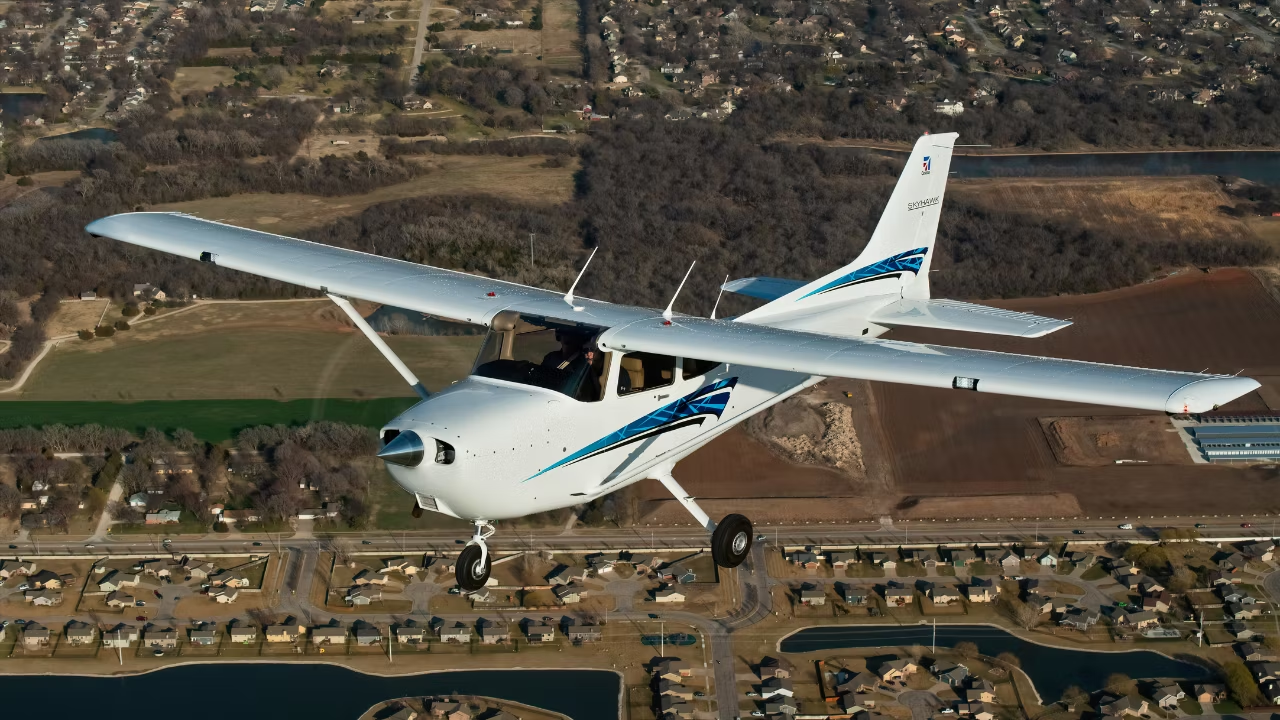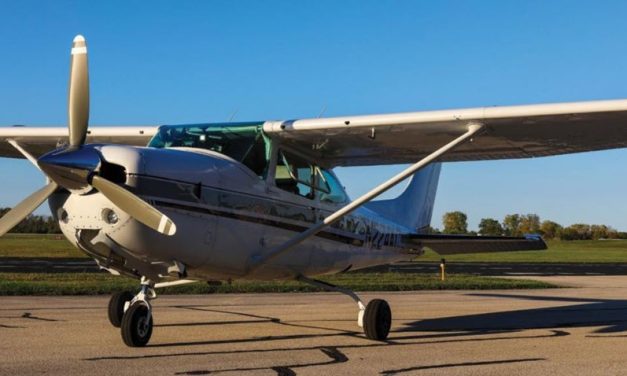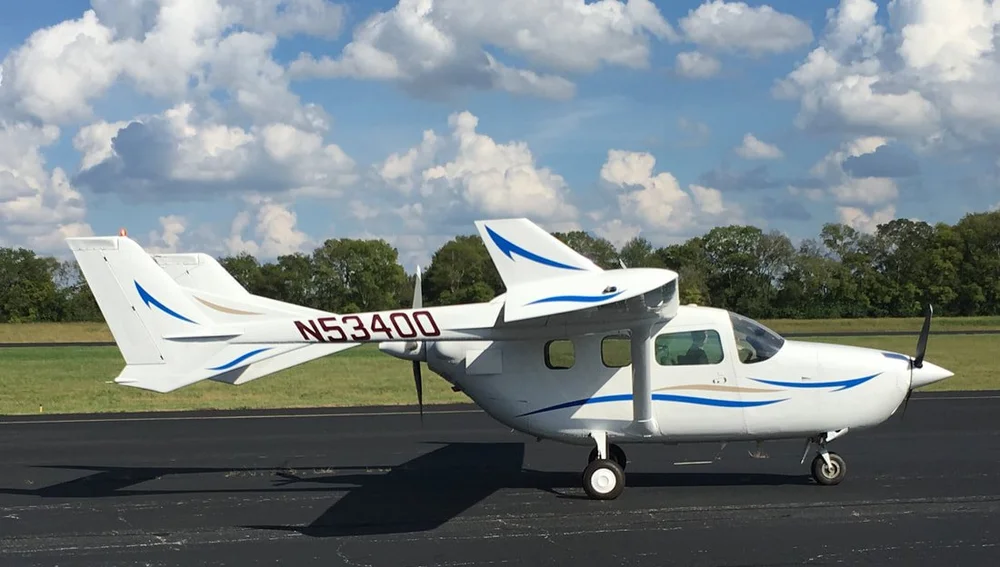Cessna 172 Plane Crash: Understanding Incidents And Safety
When folks think about small aircraft, the Cessna 172 Skyhawk often comes to mind. It's truly a workhorse of the skies, used for flight training and private trips all over. For many, it represents freedom and the joy of flying, yet, like any machine, there are times when things go wrong. So, what happens when a Cessna 172 faces an unexpected event, a plane crash, and what can we learn from these incidents?
You see, while the Cessna 172 is remarkably popular, known for being pretty straightforward to fly, it's also the most common type of plane out there. This means, naturally, it's involved in more incidents than some less-flown models. It’s not about the plane being unsafe, but more about its widespread use and how many hours it spends in the air, actually.
We're going to take a closer look at some real-world events involving the Cessna 172, drawing from actual reports and observations. It’s important, you know, to understand the situations pilots might face and what goes into investigating these occurrences, giving us a clearer picture of aviation safety.
- Red Head Characters
- Mary Cosby Net Worth
- Alex Eubank Age
- Lyrics That Are Funny
- Beautiful Blonde Actresses
Table of Contents
- The Cessna 172: A Brief Overview and Its Safety Record
- Emergency Landings: When Pilots Think on Their Feet
- Understanding Stalls and Unintended Landings
- Mid-Air Collisions: A Rare But Serious Concern
- Takeoff Troubles and Other Incidents
- What Happens After a Cessna 172 Plane Crash?
- Frequently Asked Questions About Cessna 172 Incidents
The Cessna 172: A Brief Overview and Its Safety Record
The Cessna 172 Skyhawk, you know, is pretty much a legend in the aviation world. It’s been around for ages, and countless pilots learned to fly in one. It’s got a reputation for being reliable and, you know, very forgiving, which makes it a top choice for flight schools and private owners alike. It’s often said to be the most used private plane, actually.
When it comes to safety, the Cessna 172 has a pretty good track record, considering how many hours these planes fly. The crash rate is, like, really low, sitting at about 0.56 per 100,000 flight hours. That's a very small number, in some respects, especially when you think about all the flights happening every day. They are, in a way, made to be easy to fly, which helps a lot with safety.
Even with a good safety record, incidents do happen. These can range from minor emergency landings to more serious accidents. Each event, though, offers a chance to learn and improve aviation safety for everyone involved, which is pretty important, you know.
- Cousin Birthday Meme
- Ann Carlson Shahid Khan
- David Blaine Parents
- Where Is Miguel From Love Island From
- White Passing Black Celebrities
Emergency Landings: When Pilots Think on Their Feet
Pilots train for all sorts of situations, and an emergency landing is one of the most critical. It’s about making quick decisions under pressure, often when the unexpected happens. These moments truly show a pilot's skill and calm under duress, you know, when everything counts.
Riviera Country Club Golf Course Landing
Imagine you're enjoying a round of golf, and suddenly, a small plane appears, making an emergency landing right there on the green. That's exactly what happened at the Riviera Country Club in Los Angeles. A Cessna 172, tail number N3753L, made an unexpected visit to the golf course, to the shock of golfers on the green, apparently.
This particular plane was supposed to land at a nearby airport, Santa Monica, but things didn't quite go as planned. It was coming from the Merced, CA area. This sort of situation, you know, highlights the need for pilots to always have an emergency landing plan in mind, even if it's just a golf course. A Cessna 172 made an emergency landing on the golf course of the Riviera Country Club in Los Angeles, to the shock of golfers on the green. The small plane was supposed to land at nearby Santa Monica, it seems.
Understanding Stalls and Unintended Landings
A stall in an aircraft is when the wings can no longer generate enough lift to keep the plane in the air. This usually happens when the plane's airspeed drops too low for its angle of attack. For a Cessna 172, its minimum drag speed, or Vmd, is around 75 knots, which is near the bottom of the power curve, and it’s also the speed for maximum lift to drag. Knowing these numbers is pretty vital, actually.
Skywest Airport Incident
A pilot reported that his Cessna 172 plane stalled yesterday, which resulted in a crash Wednesday afternoon at a field near Skywest Airport. This kind of event, you know, can be very sudden and requires immediate action from the pilot. A preliminary report from the Texas department of public safety was expected.
Stalls can happen for a few reasons, like flying too slowly during a turn or not having enough power. When a plane stalls, it basically loses its ability to fly gracefully. The Cessna 172 plummeted into a ditch from an altitude of about 100 feet in one instance, with no response heard before rescue personnel were dispatched to the scene. These incidents underscore the critical importance of maintaining proper airspeed and understanding the aircraft's performance limits, which is really key.
Mid-Air Collisions: A Rare But Serious Concern
Mid-air collisions are, you know, thankfully very rare, but when they do happen, they are incredibly serious. They often occur in uncontrolled airspace where pilots are responsible for "see and avoid" procedures. It’s a constant reminder for pilots to be vigilant and communicate, especially in busy areas, apparently.
Marana Regional Airport Collision
In a preliminary statement, the FAA said “a Lancair collided in midair with a Cessna 172 at Marana Regional Airport.” Marana Regional Airport is an uncontrolled field, meaning pilots are largely on their own for traffic separation. This was, in fact, the second plane crash in the Marana area within a short time.
The National Transportation Safety Board (NTSB) released a preliminary report on the November 19, 2024, crash. The pilot and passenger aboard the Lancair 360 were killed as a result of the crash, while the flight instructor and student pilot in the Cessna 172 survived, with one sustaining serious injuries. The two people in a Lancair 3600 were killed in the crash. The two in a Cessna 172 were uninjured, according to the town of Marana. Investigating this sort of plane crash is, like, a very complex process, you know.
Another related incident happened just four days prior, on July 4, in Murrieta, killing its pilot and injuring three children on board, Riverside County. This was after another small plane, a Cessna 172, crashed. Wednesday a Cessna 172 collided with a Lancair 360, the Cessna was able to land and the two people on board survived but the Lancair crashed and its occupants did not. These events really highlight the need for constant awareness in the sky, you know, especially around airports.
Takeoff Troubles and Other Incidents
Takeoff is a critical phase of flight, requiring full power and careful control. Any issue during this phase can quickly become a serious problem. Pilots have to be very precise, and the aircraft needs to perform perfectly, which is pretty much always the goal.
Newport News/Williamsburg Takeoff Incident
On October 6, 2022, at 1507 Eastern Daylight Time, N97883, a Cessna 172, was substantially damaged when it impacted terrain on takeoff from the Newport News/Williamsburg airport. A failed takeoff can be due to many factors, including engine issues, pilot error, or environmental conditions. About 30 minutes after departure, at 5,500 ft mean sea level, the engine rpm, in one instance, had an issue. This sort of thing, you know, is something investigators look into very carefully.
French Valley Airport Area Incidents
A Cessna 172 crashed after a failed takeoff at a mountain airport. This deadly crash marks the second time in the past week a plane has crashed near the French Valley Airport. The Cessna 172, you know, has manual flaps, which is a detail that can be relevant in takeoff performance. The fact that there were multiple incidents in the same area, like French Valley, suggests that there might be local factors, such as terrain or weather patterns, that are important to consider, actually.
Flagler Executive Airport Departure
The plane, a Cessna 172, departed from Flagler Executive Airport, in Palm Coast, just before 7 p.m. and was expected to land elsewhere. The crash of another plane, a Cessna C550, was reported around 4:15 a.m., having departed from Palm Coast. While these are different aircraft types, it points to the fact that departures and arrivals from specific locations can sometimes present their own set of challenges, you know, depending on the conditions.
What Happens After a Cessna 172 Plane Crash?
When a plane crash, like a Cessna 172 plane crash, happens, it sets off a very detailed process of investigation. The National Transportation Safety Board (NTSB) is the main agency in the United States that looks into civil aviation accidents. Their job is to figure out what happened and why, so similar incidents can be prevented in the future, which is pretty important.
They look at everything: the plane's maintenance records, weather conditions, pilot experience, and even air traffic control communications. For example, the Cessna parts manuals have accurate drawings without dimensions, but the width, you could scale the other dimensions from the parts manual drawing. This kind of detail, you know, helps investigators understand the aircraft's structure. They also look at things like type certificate data sheets to get all the official specs. So, they might look for the Cessna Skyhawk type certificate data sheet. Although they would like a direct link, they would appreciate an explanation of the web hierarchy to find it, basically.
They might also compare different models, like a T182 versus a 182, or an R182, which is the retract 182. They always have a model number followed by a version letter, so T182 is a turbo 182 whereas the 182T is a newer 182. The difference in service ceiling is not what one might expect between a turbocharged and non-turbocharged model, for example. All these details, you know, help paint a complete picture of the aircraft's condition and performance leading up to an incident. A very careful look into this sort of plane crash is, really, what happens.
The goal of these investigations is not to assign blame, but to gather facts and make safety recommendations. This process, you know, helps make flying safer for everyone, from pilots in training to everyday passengers. Learn more about aviation safety on our site, and you can also find out more about pilot training basics, too, which is helpful.
Frequently Asked Questions About Cessna 172 Incidents
People often have questions when they hear about plane incidents. Here are some common ones about the Cessna 172, you know, based on what we've discussed.
Is the Cessna 172 a safe plane to fly?
Generally speaking, yes, the Cessna 172 is considered a very safe aircraft. It has a very low crash rate, about 0.56 per 100,000 flight hours, and it's known for being easy to fly, which helps pilots manage it well. Its widespread use means more flight hours overall, but its design and handling characteristics contribute to its strong safety reputation, actually.
What are common causes of Cessna 172 accidents?
Common causes of incidents often include factors like engine issues, pilot error, stalls, or mid-air collisions, especially in uncontrolled airspace. For instance, we saw examples of a reported stall near Skywest Airport and a mid-air collision at Marana Regional Airport. Investigations look at all these elements, including weather and mechanical performance, to figure out what happened, you know.
How are small plane crashes investigated?
Small plane crashes, including those involving a Cessna 172, are typically investigated by the National Transportation Safety Board (NTSB) in the United States. They gather all available information, like flight data, pilot communications, weather reports, and aircraft maintenance records. Their goal is to determine the probable cause and issue safety recommendations to prevent similar incidents in the future, which is, in a way, very important work.
- Toxic Things To Say In A Roast Battle
- Michael Polansky Nationality
- Winter Bad Girl Club Parents
- Jake Andrich Height
- Love And Trust Messages For Distance Relationship

The Cost Of Owning & Operating A Single Engine Cessna

Cessna Owner Organization | Helping Members Since 1975

Cessna Skymaster Mods — Skymaster Mods & Parts